We’re Hardwired to Think, Feel, and Act in Alignment With Our Identity:
Becoming a consistently profitable trader requires that you become a new version of yourself – there’s no way around it.
But due to your current conditioning/programming, change can be difficult. When patterns of thinking, feeling, and acting have gone unchanged and repeated for years, they’re not so easy to break – even when you desperately know that change would be beneficial.
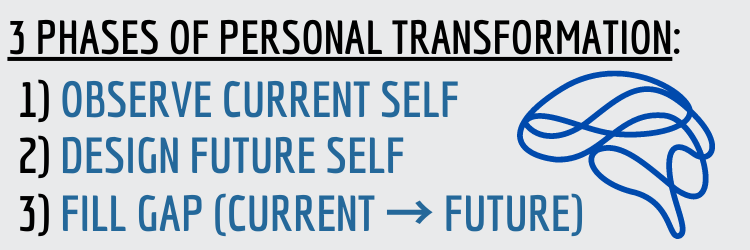
Creating a new identity that aligns with market realities is no easy task – which explains why so many participants ignore the mindset component in pursuit of other “answers”. But trying to cover up internal problems with external solutions is largely ineffective.
No matter how robust your trading strategy/system/methodology might be, it’s your underlying internal framework that dictates performance. If that framework is characterized by impulse, irrationality, and self-sabotage – then everything else is compromised.
You have to be careful not to do what most other market participants do – which is attempt to treat symptoms without treating the root cause. This would be like treating arm pain (symptom) while suffering from a heart attack; it won’t help resolve the real issue.
The parallel to trading is that participants often automatically associate poor performance to their current strategy/system as they constantly jump from one to next – all while overlooking the common denominator: themselves and their own internal framework.
It tends to be the last place market participants turn in order to resolve their problems even though it should be the first.
3 Steps to Becoming the Consistently Profitable Trader You Desire to Be:
Step #1: Gain Awareness
Task: Observe and Diagnose Current Self
This is the time to define who you are. If you know yourself, then you know what dictates your behavior in life and markets. A lot of people are scared of self-introspection and diagnosis, but conscious awareness is the first essential step in solving any problem.
Instead of dreading this process, choose to enjoy it because it will help you become a better person/trader. Welcome the opportunity as your starting point for massive growth and development. Don’t suppress and deny, but rather – accept and grow.
What do you consider your greatest strengths/weaknesses? good and bad habits? Are you disciplined or undisciplined? Calm or impulsive? How do you feel about taking losses and being wrong? Are you emotionally tied to any losing trades from the past?
Answering these questions will provide you with a level of personal depth that most market participants simply don’t have. Most choose to take a surface-level approach because it’s easy, but superficial changes are ineffective. You have to dig deep.
Exercises For Developing a Higher Level of Self-Awareness:
Exercise #1: Give yourself 10 minutes on a timer and describe yourself using as many “I am…” and “I am not…” statements as possible. Physically writing your answers down on paper makes this even more powerful (as opposed to typing on a computer).
Exercise #2: Start asking yourself “why?” before entering/exiting trades and explaining your reasons for doing so out loud. This brings conscious awareness to your decision-making process and can help pinpoint rational vs. emotional decisions.
Exercise #3: Utilize a mindset journal before, during, and after the trading session. Write freely about your fears, anxieties, exhilarations, and anything else you might be feeling. This is a frequently neglected aspect of trade tracking and review.
*Performing these exercises will make your inner landscape much more real/tangible – allowing for better understanding/analysis.
Phase #2: Set Intentions
Task: Generate a Detailed Description of Desired Self
Once you deeply understand the characteristics and tendencies of your current self, it’s time to determine those of your desired self. How exactly would you describe the trader you aspire to be? How does this trader typically think, feel, and behave?
Start making a list of all the attributes you want this trader to have. This list might include balance, objectivity, patience, confidence, resilience, consistency, etc. Then describe this trader in even more detail and vividly imagine what it would feel like to be him/her.
What are their strengths and good habits? Is this trader relaxed or tense? More focused on results or process? Does this trader take full responsibility for results or blame external forces? Prioritize short-term emotional gratification or long-term success?
Does this trader cling to painful thoughts of past and future or focus on the present moment? Attach their self-worth to the result of individual trades or think probabilistically? Is this trader suffering or thriving emotionally and financially?
Overall, how would it feel to be this “ideal” trader that you’ve described? Really feel it in your mind – and run through this description every single day to help condition/reinforce it. You’re getting closer to becoming the trader you want to be.
Exercise For Developing a Solutions-Focus:
Exercise: If you recognize legitimate obstacles (schedule and capital restraints, for example) that might impede your progress – write them down and start brainstorming plans to resolve them. There are solutions for everything if you want it bad enough.
Step #3: Execute
Task: Transform From Current Self to Desired Self
If you’ve completed the first two steps, then your level of commitment to becoming a consistently profitable trader is higher than most. But carrying out this last step is the true test – it means that you’ve raised your standards and made a real decision to change.
Understand that changing from your current self to your desired self will be extremely difficult at first because of an internal identity crisis. Your old self is strong from months/years of programming, while your new self is weak and unconditioned.
But don’t confuse this initial discomfort for change being bad/wrong. With time and repetition, your new, ideal habits will become etched in your mind, while your old, undesirable habits weaken and fizzle out. Just keep acting in alignment with your ideal self.
It’s one thing to imagine being your desired self, but taking action is the best way to cement legitimate change. When you keep casting votes for your desired self through action, the thoughts and beliefs will follow. Actions always speak the loudest.
Overall, if you consistently decide to think, feel, and behave like the trader you want to become, then you will ultimately become that trader. The new thoughts, feelings, and behaviors will require conscious effort at first, but eventually become automatic.
Exercises For Breaking Old Habits and Building New Ones:
Exercise #1: Try writing “I am a consistently profitable trader” 10 times with your non-dominant hand. Notice how you feel doing it (uncomfortable, shaky, tense, angry, etc.). Understand that these are all natural feelings when starting to build new habits/skills.
Exercise #2: Compile the list of good habits you want to build and the bad habits you want to eliminate from Steps 1 & 2. Make the good habits obvious, attractive, easy, and satisfying – and the bad habits invisible, unattractive, hard, and unsatisfying (*this idea comes from Atomic Habits).
Conclusion – Everyone is Capable of Self-Transformation if They’re Willing to Work For it:
Thanks to neuroplasticity – we have the ability to change, adapt, and grow. We just have to use it to our advantage. A lot of people fall victim to their current conditioning/programming because it’s so deeply ingrained. But that doesn’t mean it’s impossible to change.
If you allow it, your mind can can be your biggest weakness (replaying negative/destructive thought, feeling, and behavior patterns) or it can be your biggest strength (replaying positive/constructive thought, feeling, and behavior patterns). The choice is ultimately yours.
The beginning phases of transformation are difficult because you have two distinct identities: the first is your current self with deeply ingrained habits, and the second is your desired self with unconditioned habits. The gap between the two creates internal conflict.
But if you continuously make the effort to think, feel, and behave in alignment with your desired self – you will eventually become that desired self. That desired self becomes your default. It’s no longer difficult to be that way – it’s unconscious and automatic.
Think about how many traders (or people in general for that matter) truly know themselves. Then how many people take the time to describe in detail exactly who they want to become? Then how many people fully commit to executing on their desire to change?
Executing these 3 steps will provide you with a level of depth/self-mastery far greater than the masses. It’s an edge in and of itself.
Learn More in the Trading Success Framework Course
Written by Matt Thomas (@MattThomasTP)
Related Pages:
- 4 Market Characteristics You Must Align With For Success
- What is the “Fantasy Gap” in Trading – A Major Disconnect
- The Market is a Mirror – Your Experience is a Reflection of You
- Why is Day Trading So Hard – The Realities of Day Trading
- Become a Consistently Profitable Trader – The Success Formula


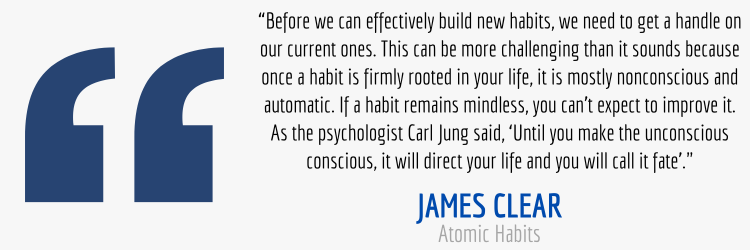
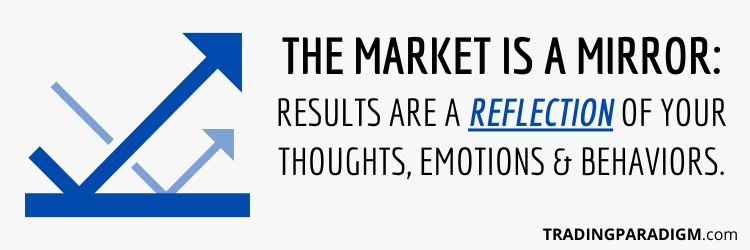
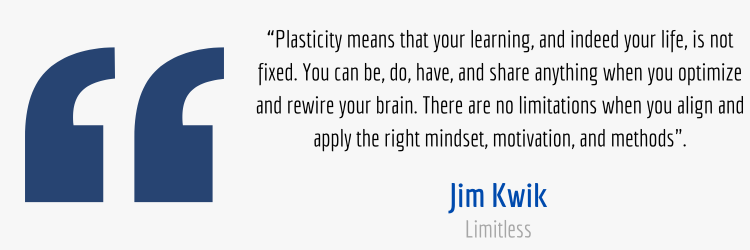
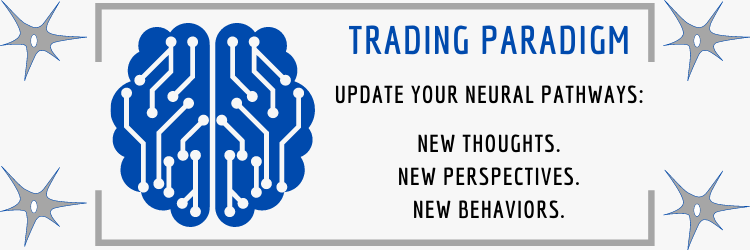

A good trader must possess all these qualities and characteristics. Without this it is not possible to engage in trade. You have listed here very interesting steps that I think are very easy to adopt. Of course, it depends on the person, whether he will invest in himself and whether he has a goal for which he is fighting.
Hi Bojana – I definitely agree that good traders need to possess certain qualities/characteristics. But that doesn’t mean individuals who don’t currently possess these important qualities/characteristics can’t engage in the markets. Almost anyone can open up a brokerage account and start trading within minutes/hours (regardless of knowledge/experience/skill levels). As a result (among additional reasons as well – like lousy trading education, people preferring shortcuts to success/get-rich-quick programs, etc.), most market participants simply aren’t prepared to operate effectively within the market environment. So it’s certainly possible to engage in trading without developing the ideal qualities/characteristics – but it most likely won’t work out very well.
The process of self-transformation is “simple” when broken down into these 3 steps, but I wouldn’t necessarily say that it’s “easy”. The self-introspection alone involved in step 1 is something most people are afraid to do – not to even mention steps 2 and 3. Really digging into all of your biases, weakness, and self-sabotaging tendencies is no easy task. It can be painful to question your deeply imbedded habits and beliefs – and then actually change them, if necessary. So while the process might sound simple in a structured 3-step article like this, the actual act of doing the work is far from easy. But for those who are deeply committed to becoming consistently profitable traders, they’re willing to sacrifice short-term emotional gratification in pursuit of their long-term goal. That’s really what I’ve found it comes down to – losing traders trade away their ultimate goal (of becoming a consistently profitable trader) for short-term hits of pleasure (thrills and excitement); winning traders do not.